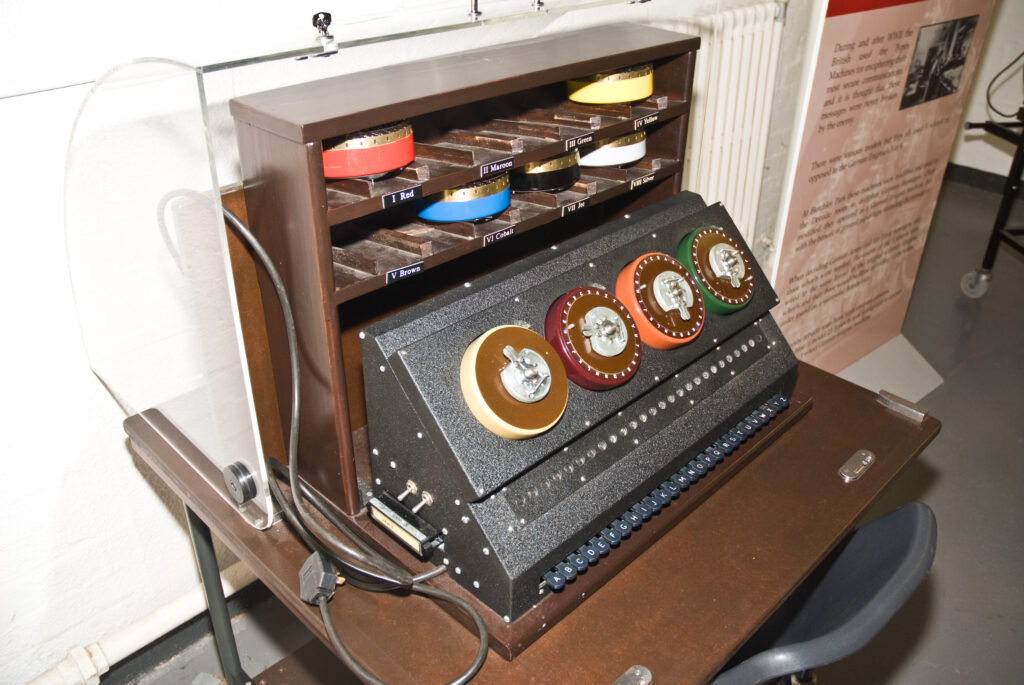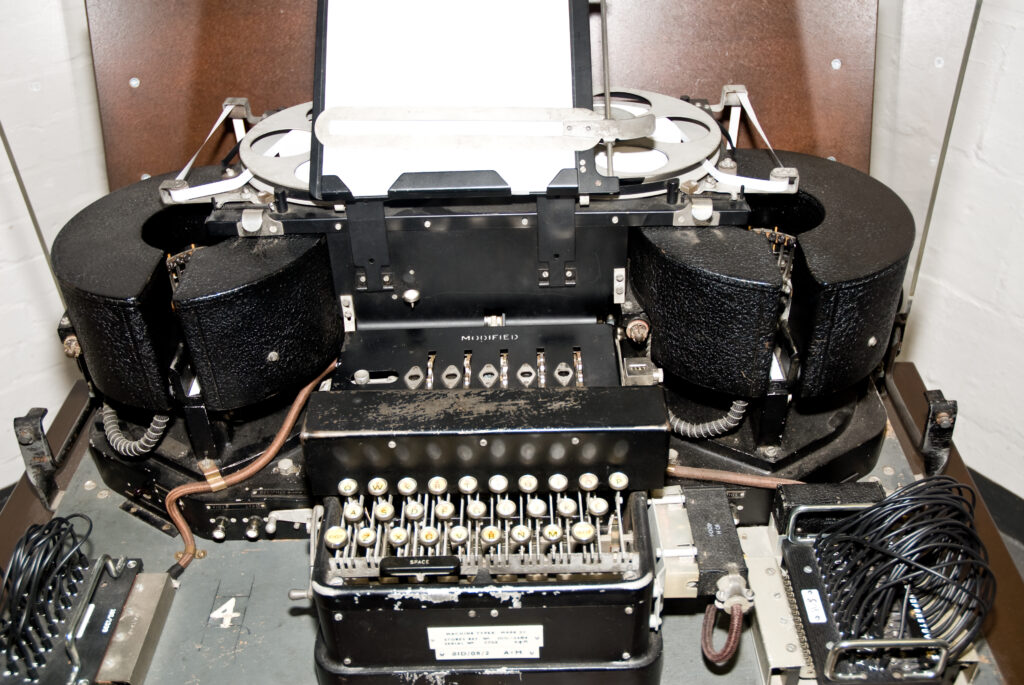The Bombe was designed to find the three essential parts of the original Enigma setting used for a particular network for a 24-hour period set up by the German operator, who used a ‘key sheet’ broken down into daily settings for a month. There were hundreds of these networks, although only about 50 were operational at any time. The Bombe sought to find for each stop:
- wheel order
- ring setting
- one stecker pair
Three banks of 12 drums each were set up on the Bombe each day. The ring setting for the stop was found from the indicator drums, relative to ZZZ. Typically, ten pairs of letters were plugged up or ‘steckered’ on the Enigma plugboard as part of the daily key setting, and a Bombe stop would suggest one of these pairings.
Menus and Cribs
The Bombe was set up according to a ‘menu’ which was based on a ‘crib’ – a section of guessed German plaintext in the enciphered message. The next step was to match the letters of the crib with their enciphered letters. Messages began with a preamble, such as call signs of sender and receiver, time, importance, sender and recipient etc., before the message proper began.
Many messages contained fairly predictable words and phrases, naval traffic in particular containing weather information and the use of words and phrases such as ‘weather forecast’, i.e., ‘wetter vorhersage’. It was these matching pairs of German text/enciphered letter that were plugged up on the rear of the Bombe. This would be sent to the Bombe outstations.
The Bombe would arrive at a stop by way of the sense relays, which would detect an open circuit and give a ringstellung for the stop as well as a stecker pair. This pair comprised a link between the ‘input’ letter on the menu, say G, (usually a strong letter which was linked in more than one place on the menu) and the letter shown on the letter box indicator, say A. The implication was that G was steckered to A. However, at this point it was not known whether it was a correct or false stop. The stop would then be tested on a checking machine. If more than one letter was found ‘steckered’ to another it was a false stop as no letter can be steckered to more than one other letter.

The drums on the checking machine were set in the correct wheel order and the alphabets on the checker drums moved to the ring setting positions and then the drums positioned as per the menu. The checking machine then found the stecker pairings for the menu letters. This information would be sent back to the codebreakers. They would then know that the wheel order was correct, and from the cribbed message and its indicators be able to deduce the remaining stecker pairings and the ‘key of the day’ ringstellung.
This information then went to an operator on a Typex machine – a British cipher machine which had been modified to work exactly like Enigma – and this was set up as per the key. Then an intercepted enciphered message was typed on the keyboard, causing two tapes to operate, one (on the large drum on the left in the photo below) to repeat the cipher as it was typed out, the other (the large drum on the right) to produce the original German text. The decrypted message was then sent to the intelligence hut where it was translated into English and, if important, sent to those who had been ‘indoctrinated’ about ULTRA – the code name given to decrypted Enigma traffic in order to disguise its origin.

If being sent to commanders in the field the decrypts were never sent as examples of codebreaking, but disguised to conceal their origin. These messages were handled in the field by Special Liaison Units and Special Communications Units, which were Section 8 (Communications) of MI6, who only dealt with ULTRA traffic. The secret of Enigma was kept under wraps for 30 years after the war, finally being revealed in 1974 with the publication of The Ultra Secret by Group Captain Frederick Winterbotham, who had been Churchill’s liaison officer with Bletchley Park, providing the wartime Prime Minister with daily copies of the main decrypts.